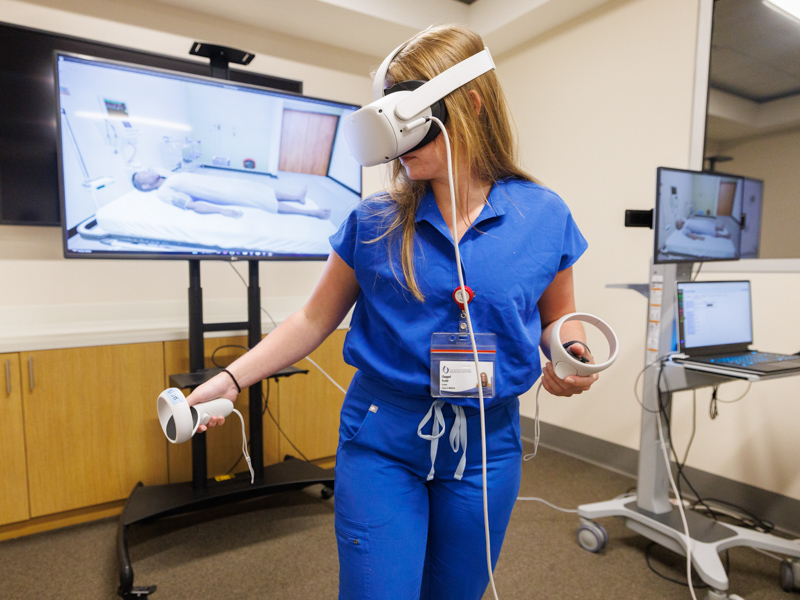Virtual Reality (VR) in healthcare refers to the use of simulated, computer-generated environments to enhance medical treatment, training, and patient care. This groundbreaking technology has found applications in surgery simulation, pain management, mental health therapy, medical training, and patient education.
As VR continues to advance, it offers the potential to improve diagnostic and therapeutic procedures, expand access to healthcare services, and alleviate patient anxiety. With its ability to create immersive and interactive experiences, VR has the potential to revolutionize the healthcare industry by providing innovative solutions that enhance patient outcomes and medical professionals’ skills.
As the integration of VR technology in healthcare expands, its impact on medical practices and patient care is expected to grow, creating new opportunities for improved treatment and better healthcare delivery.

Credit: www.umc.edu
Understanding Virtual Reality In Healthcare
Virtual reality (VR) in healthcare is a technology that creates a simulated environment, allowing users to interact with and manipulate their surroundings. In the healthcare sector, VR is used for medical training and education, pain management, and therapeutic purposes. VR provides an immersive experience that can help reduce anxiety and discomfort for patients undergoing medical procedures. It also allows healthcare professionals to practice surgical techniques in a virtual environment, improving their skills and confidence. The advantages of using VR in healthcare include enhanced patient engagement, improved treatment outcomes, and cost-effective training for medical professionals. By leveraging VR technology, healthcare organizations can offer innovative solutions and improve the overall quality of care for patients.
Applications Of Virtual Reality In Healthcare
Virtual reality (VR) has emerged as a powerful tool in healthcare with diverse applications. Medical professionals can benefit from VR through training and education. VR offers immersive simulations, enabling them to practice complex procedures in a realistic environment. This technology also plays a crucial role in pain management and rehabilitation for patients. By creating immersive and interactive experiences, VR can help patients manage pain and aid in their rehabilitation process. Moreover, VR facilitates surgical planning and simulation, allowing surgeons to visualize and plan intricate procedures in a virtual environment, improving their precision and efficiency in the operating room.
The Future Of Virtual Reality In Healthcare
Virtual reality (VR) has made significant advancements in the healthcare industry, enhancing patient care and medical training. The technology offers immersive experiences, enabling physicians to practice surgical procedures and providing a realistic environment for therapy and rehabilitation. VR’s potential impact on patient outcomes is substantial, as it allows for personalized treatment plans and improved pain management. Despite its promising applications, challenges exist for widespread adoption, including cost, privacy concerns, and regulatory barriers. However, these obstacles also present opportunities for innovation and collaboration within the healthcare community.
Frequently Asked Questions Of What Is Virtual Reality In Healthcare?
What Are The Benefits Of Using Virtual Reality In Healthcare?
Virtual reality in healthcare can improve medical training, patient therapy, and surgical planning. It can also help reduce stress and anxiety for patients, providing distraction during procedures.
How Is Virtual Reality Used In Patient Therapy?
Virtual reality is used in patient therapy to create immersive, interactive environments that aid in pain management, rehabilitation, and exposure therapy for treating phobias and PTSD.
Can Virtual Reality Be Used For Medical Training?
Yes, virtual reality is increasingly being used for medical training to simulate surgical procedures, patient examinations, and emergency scenarios, offering a safe and realistic learning environment for healthcare professionals.
Conclusion
Virtual reality technology holds immense potential for revolutionizing healthcare. By enhancing medical training, patient education, and therapy, it could lead to better healthcare outcomes. As the technology continues to advance, it is evident that virtual reality will play a crucial role in shaping the future of healthcare delivery and patient care.





